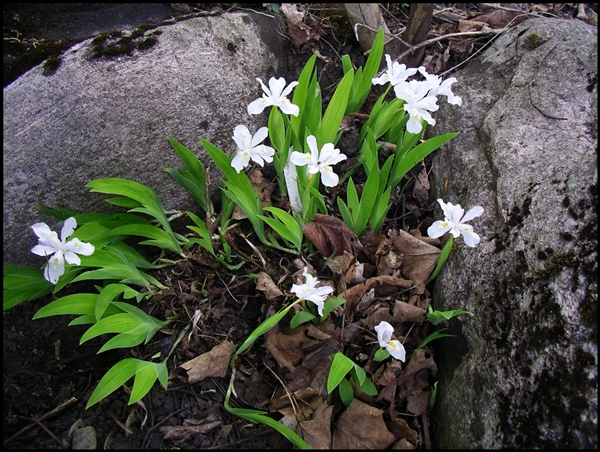Plant of the Month for June, 2014

(EYE-ris kris-TA-da)
General Information:
Iris are popular plants for the sunny garden, but what if you want to grow them in shade? Iris cristata ‘Alba’ fills that role very nicely. It grows best in part shade with a reasonable amount of moisture.
This plant is much smaller than your common garden iris, but it puts on a nice show early in the season, well before the bearded iris. It does not need to be dug up regularly, and so far I have not seen an iris borer on them.

Iris cristata ‘Alba’ ; photo by Robert Pavlis
The normal colouration for Iris crista, the dwarf crested iris, is dark blue, light lilac, or lavender and the alba form is white with yellow falls. The white one really stands out in a shady area.
The crested iris can be a bit tricky to plant. Out of 4 attempts, 2 have survived. The good news is that once it takes hold, it is quite easy to grow and it spreads fairly quickly—for an iris! The iris likes moisture, but I think it is important that when you plant, you keep the rhizomes uncovered. If they are covered with soil they seem to rot. Once established, new rhizomes grow along the soil surface, fully exposed.
Life Cycle: perennial
Height: 15cm (0.5ft)
Bloom Time: May
Natural Range: Eastern USA
Habitat: calcareous soils, in rich wooded slopes and floodplain forests in dappled shade
Synonyms: none
Cultivation:
Light: part-shade or sun if given enough moisture
Soil: well drained
Water: even moisture
USDA Hardiness Zone: 3-9
Propagation: seed, division
Seedex availability (ORG&HPS annual Seed Exchange): rarely
